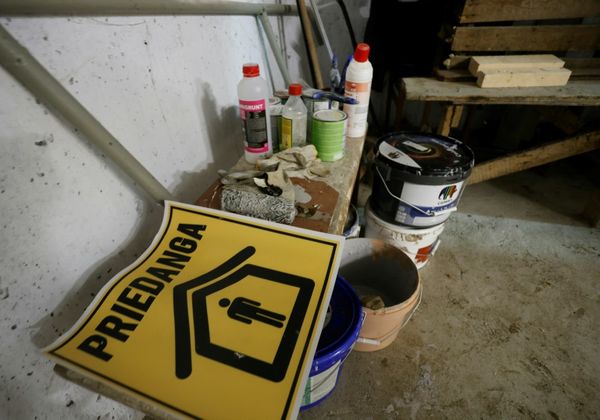Mary Anderson was ahead of her time. Back in the early 1900s, when most men were the breadwinners and few women worked outside the home, the unmarried, mid-30s Anderson thought like a businessman. She was also dreaming like an entrepreneur. And problem-solving like an inventor.
She saw economic opportunity in a snow-covered windshield in 1902. She was riding in a trolley car during a visit to New York City. The problem? The driver couldn't see the road due to sleet and snow. Visibility was poor. So poor that the driver had to keep sticking his head out the window to see ahead. Sometimes he stopped to get out and sweep the snow off the windshield by hand.
Anderson (1866-1953) figured there had to be a better way. Like any inventor or entrepreneur, she began to think big. And outside the box. The wheels in her mind began to turn.
"The thoughts sparked an invention that would benefit every driver in the world," according to a story about Anderson published by AutoZone, an auto parts retailer.
Mull Over A Better Way Like Mary Anderson
When Anderson returned home that winter to Birmingham, Ala., she came up with a solution. She drew a sketch of a windshield wiper blade that the driver could operate from inside the vehicle. She wrote up a description of how it would work. And then went all in when she filed for a patent on June 18, 1903.
"Her idea consisted of a lever inside the vehicle that controlled a spring-loaded arm with a rubber blade," according to the National Inventors Hall of Fame, who inducted Anderson in 2011, nearly six decades after her death in 1953 at age 87.
"The lever, with a counterweight to keep the wiper in contact with the window, could move the blade across the windshield, removing rain or snow." On November 10, 1903, the U.S. Patent Office awarded Anderson patent number 743,801 for her "window cleaning device."
Anderson's triumph, though, was short-lived. Her timing was off. Cars were still the future and not widely available. That wasn't until five years later in 1908 when Henry Ford's Model T hit the nation's roads. And it wasn't until 1922 when Cadillac began selling cars with windshield wipers as a standard feature.
Don't Let Rejection Stop You
So, when Anderson tried to sell her invention to manufacturing companies and profit from her idea, she was rejected repeatedly. "The story of the missed chance is almost as big as the invention itself," said Sara Scott Wingo, Anderson's great-great niece who heard stories about the inventor and entrepreneur from her dad.
Wingo recalls one of the rejection letters from Canada-based manufacturer Dinning & Eckenstein dated June 20, 1905. It read: "We regret to state we do not consider it to be of such commercial value as would warrant our undertaking its sale." The patent expired in 1920.
Although there is not much known about Anderson, there is a lot to learn from her inventive mind and entrepreneurial streak. Her efforts to monetize her idea despite impossible odds only highlight her work and her blueprint for success.
"Anderson was not properly recognized for her innovation during her lifetime," according to the National Inventors Hall of Fame. "Through no fault of her own, her invention was simply ahead of its time, and other companies and entrepreneurs were able to profit off her original ideas."
Wingo's theory is that her great-great aunt's windshield wiper idea didn't get off the ground because she was a woman, a fact many of the men running most businesses couldn't look past.
"It was not a time when women could go out in the world and do things like that," said Wingo. "If she had spelled her name Marian (a man's first name) Anderson in her patent application, maybe it would have been a different story."
Still, Anderson's keys to success are timeless. She was an inventor. But an entrepreneur, too. She made money in real estate, building and managing an apartment building in Birmingham, and operated a cattle ranch and vineyard in Fresno, Calif.
Turn Idea Into Action
Coming up with an idea and following through on it are two different things. Often, ideas die from a lack of initiative.
Anderson, though, turned an idea into action, the first baby step toward becoming an entrepreneur rather than just a dreamer.
"She wasn't merely curious about this concept, nor was she just tinkering with a fanciful dream," AutoZone noted. "She was so serious about it that she applied for a patent."
Anderson's methodical progression from idea to sketch to patent application speaks volumes about her belief in herself and her invention. "It takes perseverance to follow through on an idea," said Rini Paiva, executive vice president at the National Inventors Hall of Fame. The follow-through can't be overestimated. "She didn't just have an idea, she did something about it."
Paiva says Anderson possessed the key traits that boost the chances of success at work and in life.
"She was persistent, she was forward-thinking, and she had the drive to follow up on an idea," said Paiva. Anderson, Paiva adds, was a problem-solver who lived by the mantra: I know how to make that better. "She was willing to think about all the different ways for a problem to be solved," Paiva said.
Pay Attention To Detail
History books lack detailed descriptions of Anderson's life or business endeavors. But much can be learned about her from the detailed sketch of her window cleaning device submitted in her patent application.
The attention to detail in the sketch offers a window into her thinking, ambition, and commitment.
"It shows she thought a lot about the engineering, and you know it went through a lot of iterations," Paiva said. "It looks like a windshield wiper. You can recognize all the tiny details that she described in the patent. How the arm is going to swing. The fact that it is spring-loaded."
Follow Your Dreams Like Anderson
Anderson could have snuffed out her inventor's dream and said, "why bother," simply because she was a woman and knew the odds of succeeding were slim. But striving to attain her goal outweighed the major obstacle of being a woman in the male-dominated world of business at the start of the 20th century.
"Put it in context of the era," said Paiva. "A single woman files for and receives a patent. That's phenomenal when you put it in the big picture. She had to be a very driven and goal-oriented person."
Her drive defined her, says Paiva. During her life, she moved to the other side of the country to run a cattle ranch. She also built and managed an apartment building in Birmingham.
"She was driven by the endgame," Paiva said. Her mindset was about business and figuring out ways to make money, be successful, and support herself. "What will happen if I build this apartment building? What will happen if I patent this wiper? To me, she would stand out even in today's world. From what we do know of her, she's a great example of what it takes to be a success."
Anderson's focus on tomorrow is another lesson all budding entrepreneurs should heed. "She's a good reminder for all of us to think about the possibilities and how things will develop in the future," Paiva said.
Mary Anderson's Keys
- Inventor and patent holder for the windshield wiper.
- Overcame: Obstacles facing female inventors and entrepreneurs in the male-dominated world during her lifetime.
- Lesson: "Think about the possibilities and how things will develop in the future," said Rini Paiva, executive vice president at the National Inventors Hall of Fame.







